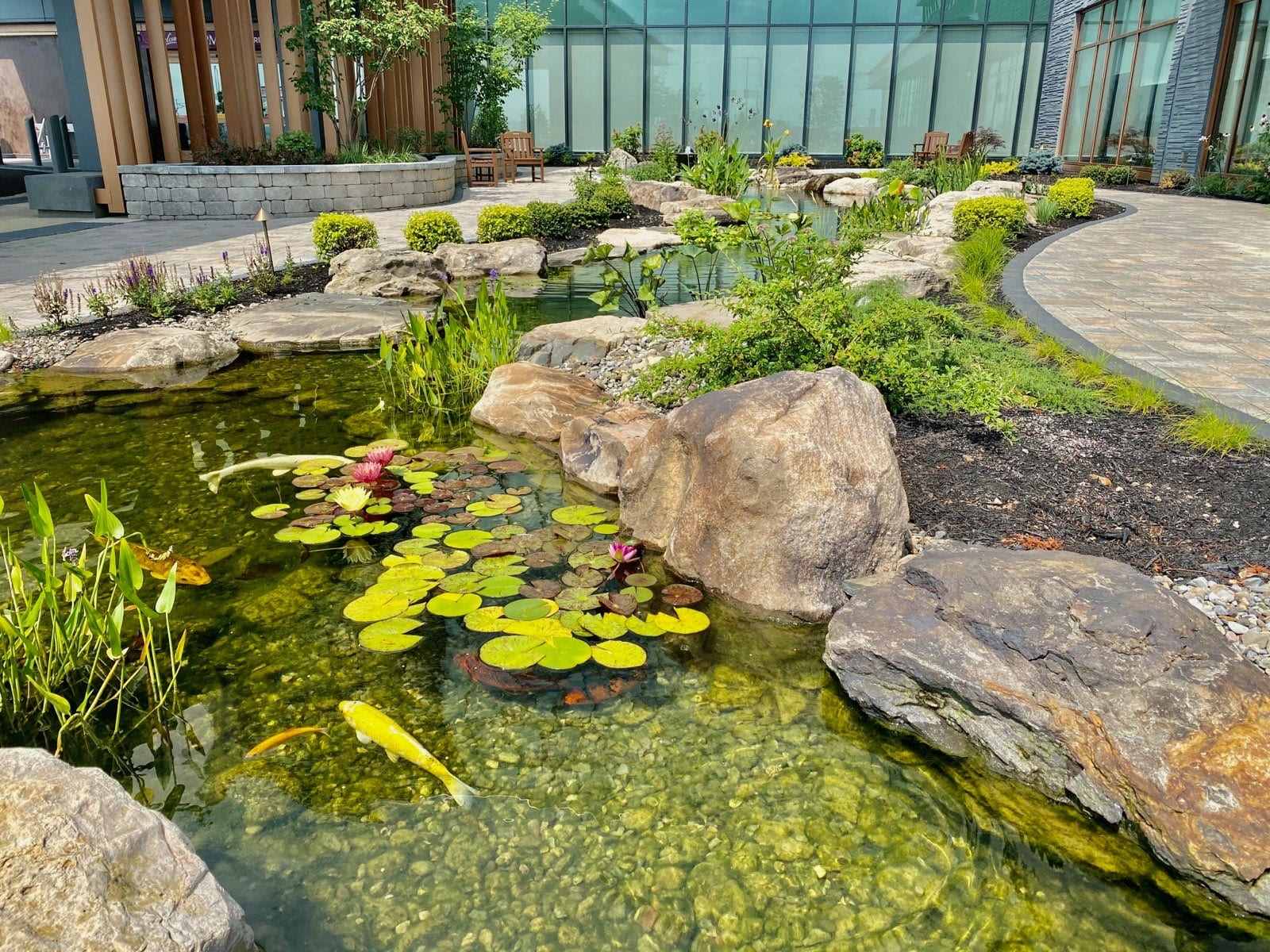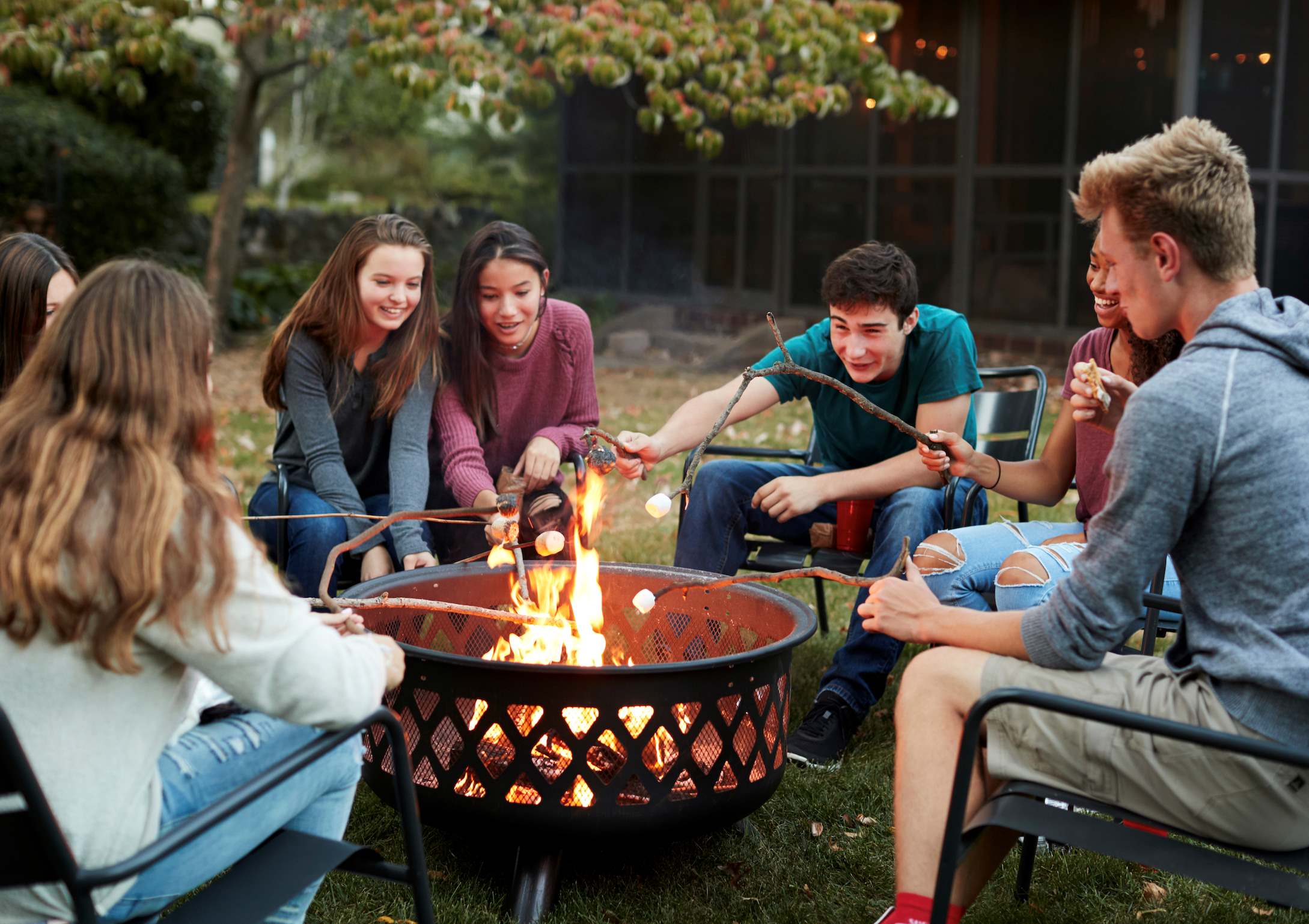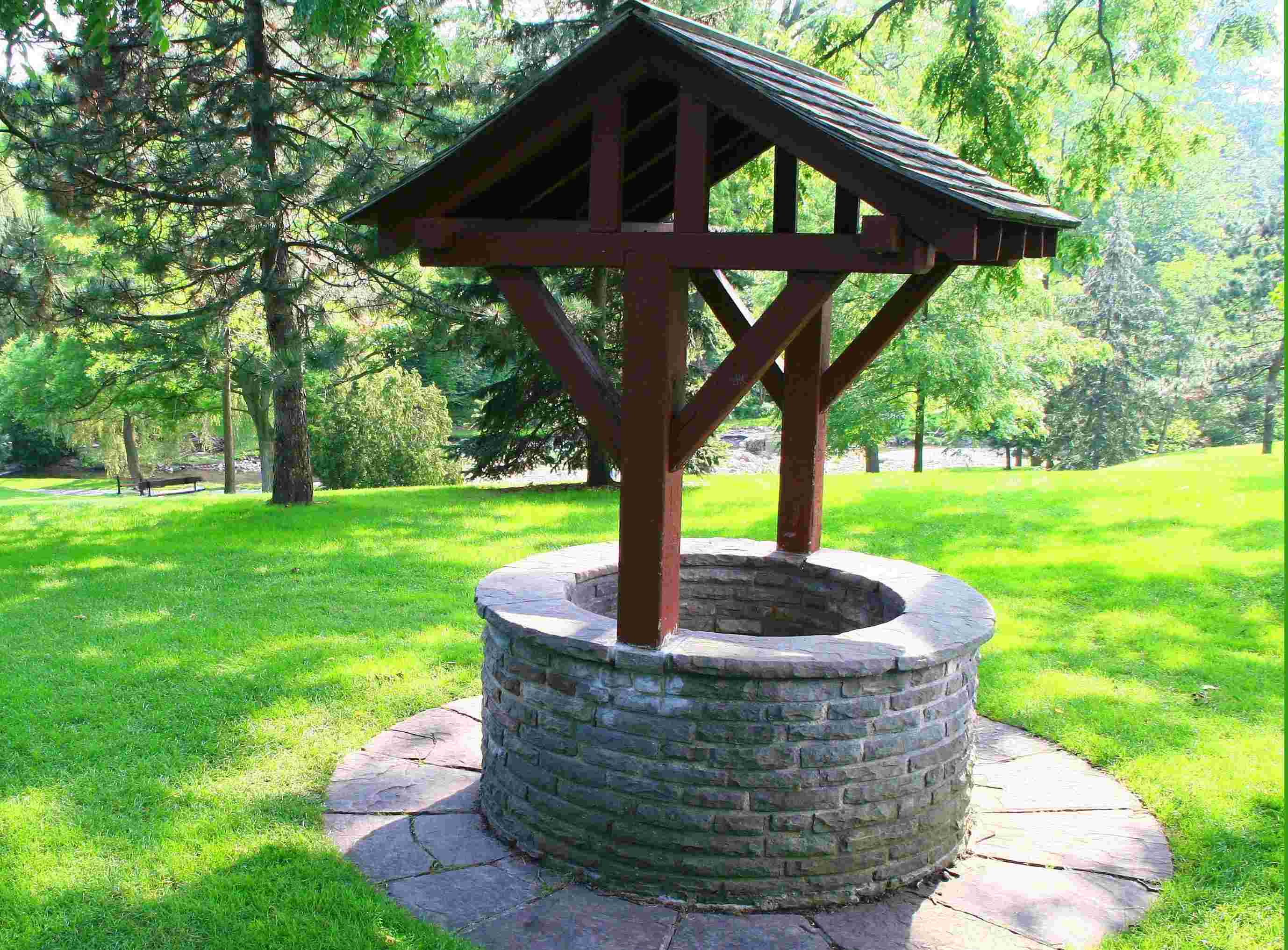Home>Gardening Tips and Tricks>How To Find A Frog In Your Backyard


Gardening Tips and Tricks
How To Find A Frog In Your Backyard
Published: August 5, 2023
Learn problem-solving techniques to find a frog in your backyard with our step-by-step guide. Discover helpful tips and tricks for locating these fascinating creatures.
(Many of the links in this article redirect to a specific reviewed product. Your purchase of these products through affiliate links helps to generate commission for Chicagolandgardening.com, at no extra cost. Learn more)
Table of Contents
Introduction
Welcome to the wonderful world of frogs! These fascinating creatures inhabit various ecosystems around the globe, and you might be surprised to find out that you have them right in your own backyard. From their unique calls to their distinctive appearances, frogs have captivated the human imagination for centuries.
Whether you’re a nature enthusiast, a curious observer, or simply looking for a fun and educational activity, finding and exploring frogs in your backyard can be an exciting adventure. Not only will you get to witness the beauty of these amphibians up close, but you will also gain a deeper understanding of the natural world around you.
In this article, we will guide you through the process of finding frogs in your backyard and provide you with valuable information on creating a frog-friendly environment. We will share techniques for identifying common frog species, tips for observing their habitats, and even some ethical considerations for handling them responsibly.
So, grab your flashlight, put on your adventure hat, and let’s dive into the fascinating realm of backyard frogs!
Understanding Frogs
Before embarking on your frog-finding journey, it’s essential to have a basic understanding of these remarkable amphibians. Frogs belong to the order Anura, which encompasses over 7,000 known species. They are characterized by their smooth and moist skin, webbed feet, and the ability to leap significant distances.
Frogs play a crucial role in the ecosystem as both predators and prey. They feed on insects, spiders, worms, and other small creatures, helping to control populations and maintain ecological balance. Additionally, frogs serve as an important food source for larger animals such as birds and reptiles.
One of the most distinctive features of frogs is their remarkable ability to communicate through vocalizations. Each species has a unique call, which plays a vital role in attracting mates and defending territories. By listening to these calls, you can easily identify the presence of frogs in your backyard during the breeding season.
Understanding the life cycle of frogs is also key to unraveling their fascinating world. They undergo a process called metamorphosis, starting as eggs laid in water, transforming into tadpoles that breathe through gills, and eventually developing into adult frogs with lungs. This transformational journey is a sight to behold and offers a unique opportunity for observation in your own backyard.
Lastly, it’s crucial to note that frogs are ectothermic, which means their body temperature varies with the environment. This makes them highly sensitive to changes in environmental conditions, such as temperature and moisture levels. Creating a suitable habitat in your backyard is essential to attracting and supporting these fascinating creatures.
By delving into the world of frogs and gaining a deeper understanding of their characteristics and behaviors, you’ll be better equipped to appreciate and connect with these incredible creatures in your own backyard.
Creating a Frog-Friendly Environment
If you want to attract frogs to your backyard and provide them with a safe and welcoming habitat, there are a few key steps you can take. By creating a frog-friendly environment, you’ll not only increase your chances of finding these amphibians but also contribute to their overall conservation.
1. Provide water sources: Frogs require access to water for breeding and survival. Consider adding a small pond, water feature, or even a shallow container with clean water to your backyard. Make sure to keep the water levels consistent and avoid the use of chemicals that could harm the frogs or their eggs.
2. Plant native vegetation: Native plants not only beautify your backyard but also provide food and shelter for frogs. Research the plants that are indigenous to your area and include a diverse range of vegetation, such as grasses, shrubs, and trees. This will create a more natural and diverse habitat, attracting frogs and the insects they feed on.
3. Maintain a balanced ecosystem: To support a healthy population of frogs, it’s important to maintain a balanced ecosystem. Avoid using harmful pesticides and chemical fertilizers that can disrupt the food chain and harm frogs. Instead, opt for organic gardening methods and encourage natural pest control through the presence of beneficial insects and birds.
4. Provide suitable hiding spots: Frogs need shelter to feel safe and protected. Create areas in your backyard with piles of rocks, logs, and leaf litter where they can hide during the day and find protection from predators. These hiding spots also offer humidity, moisture, and microhabitats that are essential for their survival.
5. Minimize noise and light pollution: Frogs are sensitive to noise and light pollution, which can disrupt their natural behaviors. Keep loud noises, such as machinery or loud music, to a minimum and consider installing outdoor lighting that is directed downward to reduce light pollution. This will create a more tranquil and suitable environment for frogs.
By implementing these measures, you will be creating a frog-friendly environment that not only attracts these fascinating creatures but also contributes to the overall health of your backyard ecosystem. So, roll up your sleeves and get ready to transform your outdoor space into a haven for frogs!
Observing Frog Habitats
Once you have created a frog-friendly environment in your backyard, it’s time to start observing their habitats. By understanding their preferred hiding spots and activity patterns, you can increase your chances of spotting these elusive creatures. Here are some tips to help you observe and appreciate frog habitats:
1. Be patient and observant: Frogs are masters of camouflage and can blend seamlessly into their surroundings. Take the time to carefully scan and observe your backyard, paying attention to areas near water sources, vegetation, and potential hiding spots. As you spend more time observing, you’ll become more attuned to their patterns and behaviors.
2. Watch for signs of activity: Keep an eye out for signs of frog activity, such as ripples or movement in the water, rustling in the vegetation, and calls during the evening or early morning. Frogs tend to be more active during the warmer months and in the evenings, so plan your observations accordingly.
3. Use binoculars or a camera: Binoculars can be a valuable tool for observing frogs from a distance without disturbing them. If you have a camera with a zoom lens, you can also capture close-up images of frogs for identification and documentation purposes. Remember to keep a respectful distance and avoid causing any stress or harm to the frogs.
4. Take notes and document your observations: Keep a journal or notebook to record your observations. Note the date, time, weather conditions, and any notable behaviors you witness. This documentation will not only enhance your understanding of frogs but also contribute to citizen science efforts and help researchers monitor frog populations.
5. Involve others and join local groups: Consider involving family and friends in your frog-watching adventures. It can be a fun and educational activity for everyone. Additionally, search for local community organizations or nature groups that focus on amphibian conservation. They may offer guided nature walks or educational programs where you can learn more about frogs and their habitats.
Remember, observing frog habitats requires patience and respect for these sensitive creatures and their environment. Always prioritize their well-being and avoid disturbing their natural behaviors. By immersing yourself in their world and appreciating their habitats, you’ll develop a deeper connection to the amazing world of frogs.
Identifying Common Frog Species
When exploring frog habitats in your backyard, it’s helpful to be able to identify the different species you may encounter. While there are numerous frog species worldwide, let’s focus on some common ones you might find in your area:
- Green Tree Frog (Hyla cinerea): This medium-sized frog is known for its vibrant green color and white or yellow spots on its back. It is often found in trees or near water sources and has a distinctive trilling call.
- Pacific Tree Frog (Pseudacris regilla): This small frog can vary in color from green to brown, depending on its surroundings. Its belly is typically cream or pale yellow. It is known for its high-pitched and repetitive “ribbit” call.
- Bullfrog (Lithobates catesbeianus): One of the larger frog species, the Bullfrog has a green or brown coloration with a creamy-yellow belly. It is commonly found in lakes, ponds, or slow-moving rivers and has a deep resonating call that sounds like a low “jug-o-rum.”
- American Toad (Anaxyrus americanus): This toad species has a rough, warty skin and can vary in color from olive green to brown. It has a distinct pattern of dark spots on its back. The call of the American Toad is a loud, high-pitched trill that resembles the sound of a ringing telephone.
- Spring Peeper (Pseudacris crucifer): This tiny frog measures only about an inch in length and is usually tan or light brown in color. It has dark “X” or “cross” markings on its back. The call of the Spring Peeper is a loud, high-pitched series of “peep” sounds.
These are just a few examples of common frog species you may encounter in your backyard or local area. To identify specific species, it is helpful to consult field guides, websites, or local conservation organizations that specialize in amphibian identification. Pay attention to characteristics such as size, coloration, patterns, and calls to differentiate one species from another.
Remember, it’s important to keep in mind that different regions and habitats may have their own unique set of frog species. By familiarizing yourself with the common frogs in your area, you’ll be able to appreciate their diversity and learn more about their specific needs and behaviors.
Techniques for Finding Frogs
Searching for frogs in your backyard requires a combination of observation, patience, and a keen eye. Here are some techniques to help you successfully find these fascinating amphibians:
- Listen for calls: Many frog species are known for their distinctive calls during their breeding seasons. By listening for these calls in the evening or early morning, you can identify their presence and narrow down your search area.
- Use a flashlight: Frogs are nocturnal creatures, so exploring your backyard under the cover of darkness can increase your chances of finding them. Use a flashlight with a soft beam to illuminate potential hiding spots, but be sure not to shine the light directly in their eyes.
- Search near water sources: Frogs are attracted to moist environments and rely on water for breeding. Focus your search near ponds, streams, or any other water sources in your backyard. Look for frogs on plant leaves or near the water’s edge.
- Check under rocks and logs: Frogs often seek shelter under rocks, logs, or piles of vegetation during the day. Gently lift these objects, being careful not to disturb their habitat, to see if any frogs are hiding beneath.
- Look for movement: Use your keen eyes to notice any movements or disturbances in foliage. Frogs can be excellent at blending into their surroundings, but their subtle movements can give them away.
- Pay attention to the ground: Some frog species are known for their burrowing behavior. Keep an eye out for holes or depressions in the ground, as they could be potential hiding places for frogs.
- Observe during rain or after watering: Frogs are more active during wet conditions. After a rain or after watering your garden, take the opportunity to observe your backyard for any frogs that may have emerged or come out in search of food.
- Involve a citizen science project: Consider participating in a citizen science project that focuses on monitoring frog populations. These projects often provide guidance on survey methods and allow you to contribute valuable data to scientific research.
Remember, when you are searching for frogs, it’s important to minimize disturbances to their natural habitat and handle them with care if you choose to catch or handle them. Always prioritize their well-being and ensure you release them back into their habitat promptly.
By employing these techniques and honing your observation skills, you’ll increase your chances of finding and appreciating the wondrous world of frogs right in your own backyard.
Tips for Catching and Handling Frogs
If you’re interested in catching and handling frogs, it’s important to do so responsibly and with the well-being of the frogs as a top priority. Here are some helpful tips to ensure a safe and respectful approach:
- Always wash your hands: Before and after handling frogs, thoroughly wash your hands with soap and water. This helps prevent the spread of any potential diseases or toxins that may be on their skin.
- Handle frogs with wet or gloved hands: Wet your hands or wear disposable gloves to minimize damage to the frog’s sensitive skin. Dry hands can remove their protective mucus layer, making them more susceptible to infection.
- Support the frog’s body: When holding a frog, support its body with gentle and secure grips. Avoid squeezing or putting excessive pressure on their delicate limbs as this can cause injury or stress.
- Do not handle frogs unnecessarily: Frogs have delicate skin that can easily be damaged. Only handle them if necessary for observation, identification, or scientific purposes. Minimize the time spent handling them to reduce stress.
- Release frogs in their original habitat: After observing or handling frogs, promptly release them back into their natural habitat. Ensure that the release location is suitable and provides the necessary food, water, and shelter for the specific species of frog.
- Do not capture wild frogs as pets: While frogs may seem like fascinating pets, it is best to appreciate them in their natural habitat rather than keeping them as pets. Capturing wild frogs as pets can disrupt their populations and their ecosystems.
- Respect local regulations and laws: Check and adhere to any local regulations or laws regarding the handling, capturing, or keeping of frogs. Protecting and preserving these amazing creatures is a collective responsibility.
- Educate others about responsible frog handling: Share your knowledge and passion for frogs with others, emphasizing the importance of responsible frog handling and conservation. By spreading awareness, we can inspire more people to protect and appreciate these incredible creatures.
Remember, the well-being of frogs should always come first. Treat them with respect, handle them gently, and release them back into their natural habitat as soon as possible. By following these tips, you can enjoy the experience of interacting with frogs while minimizing any potential harm.
Ethical Considerations
When it comes to observing, handling, and interacting with frogs, it’s important to keep ethical considerations in mind. By being mindful of these principles, we can ensure the well-being of the frogs and contribute to their conservation. Here are some ethical considerations to bear in mind:
- Do not harm or disturb their habitat: Frogs rely on specific habitats for shelter, breeding, and feeding. It is crucial to avoid damaging or disrupting their habitat, including bodies of water, vegetation, and natural hiding spots.
- Respect their natural behaviors: Observing frogs in their natural environment should be done without interfering or altering their natural behaviors. Avoid actions that could disrupt their feeding, breeding, or other essential activities.
- Minimize handling and stress: When interacting with frogs, minimize any unnecessary handling to prevent stress and potential harm. Unnecessary handling can interfere with their natural behaviors and may lead to injuries or transmission of diseases.
- Consider their well-being: Prioritize the welfare of the frogs above personal desires or amusement. Their well-being should always take precedence, and any actions taken should be in their best interest.
- Coexist with frogs: Respect that frogs are wild animals and should be appreciated in their natural environment. Rather than attempting to keep them as pets, focus on fostering a frog-friendly environment in your backyard and allowing them to thrive naturally.
- Contribute to conservation efforts: Consider supporting local amphibian conservation projects or organizations dedicated to protecting frogs and their habitats. By volunteering, participating in citizen science initiatives, or making donations, you can contribute to their conservation on a larger scale.
- Educate others: Share your knowledge and passion for frogs with others, promoting awareness and understanding of the importance of frogs in ecosystems. Encourage responsible behavior and emphasize the need to protect and preserve these remarkable creatures for future generations.
By following these ethical considerations, you can enjoy the experience of observing frogs while ensuring their well-being and contributing to their conservation. Remember that frogs play a vital role in maintaining ecological balance, and it is our responsibility to treat them with respect and protect their habitats.
Conclusion
Exploring the world of frogs in your own backyard can be a rewarding and educational experience. By creating a frog-friendly environment, understanding their habitats and behaviors, and approaching them with respect and mindfulness, you can unlock a fascinating world of amphibian wonders.
Throughout this article, we have discussed the importance of understanding frogs, creating a suitable habitat, identifying common species, employing techniques to find them, and handling them ethically. By following these guidelines, you can embark on a frog-finding journey that not only brings joy and excitement but also contributes to their conservation and ecological balance.
Remember, frogs play vital roles in our ecosystems, from controlling insect populations to serving as indicators of environmental health. By observing, appreciating, and protecting them, we can take steps towards preserving their habitats and ensuring their populations thrive for generations to come.
So, grab your binoculars, put on your rain boots, and embark on a frog-filled adventure in your own backyard. Discover the diverse species, listen to their enchanting calls, and marvel at their remarkable adaptations. Let the world of frogs inspire you to appreciate the wonders of nature and to become stewards of our fragile and interconnected ecosystems.
Happy frog finding, and may your backyard be filled with the delightful sights and sounds of these amazing amphibians!










